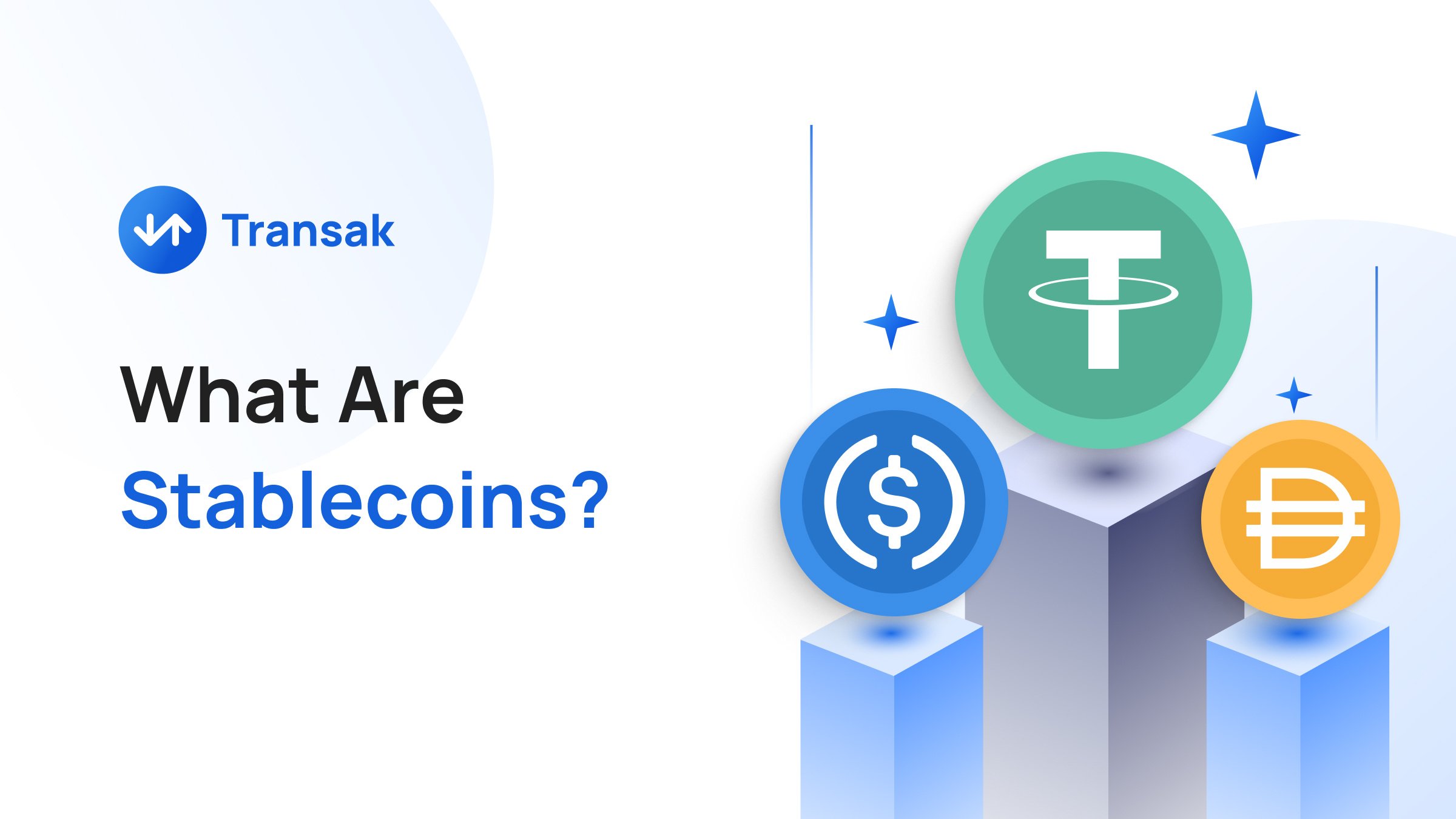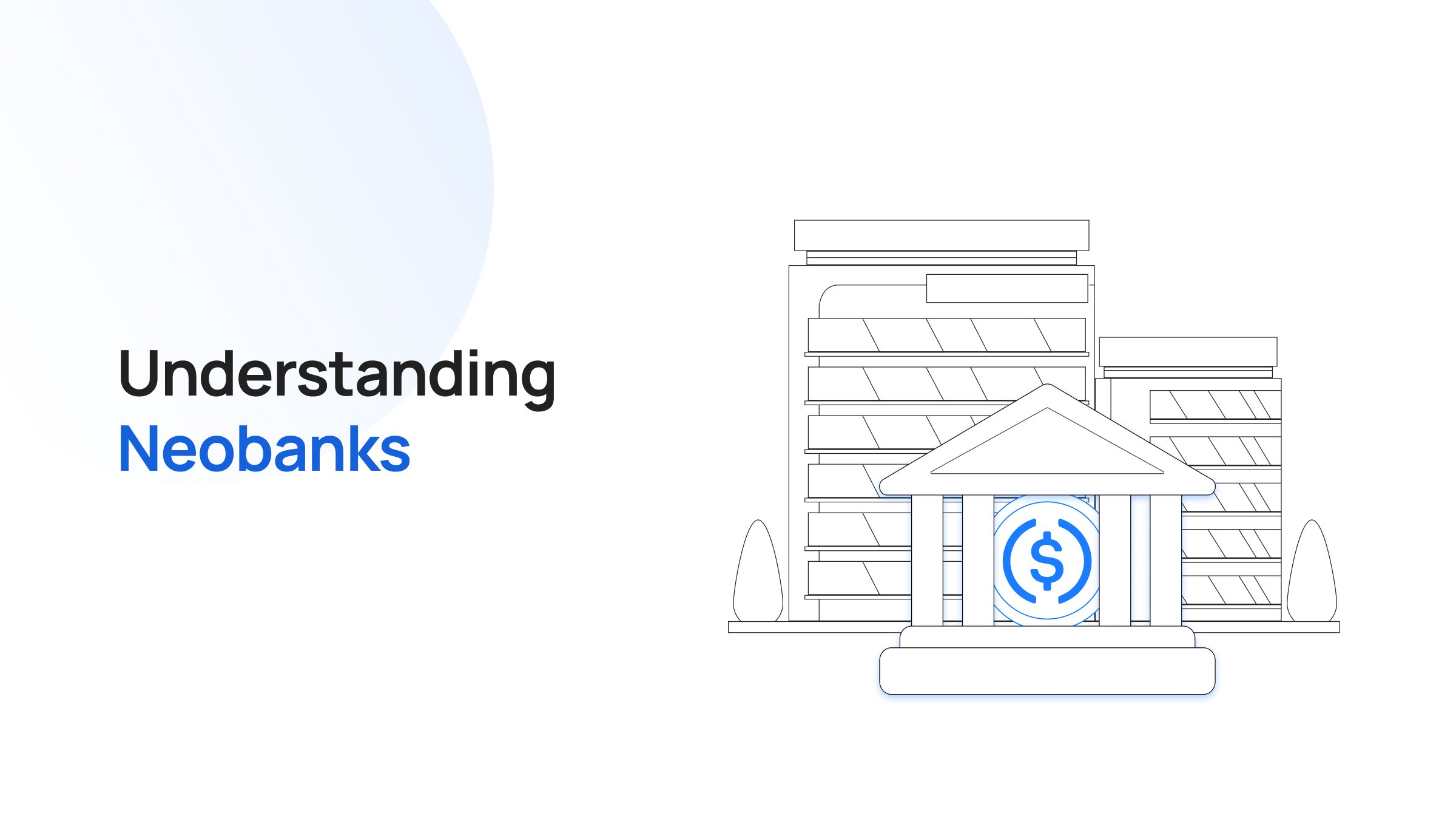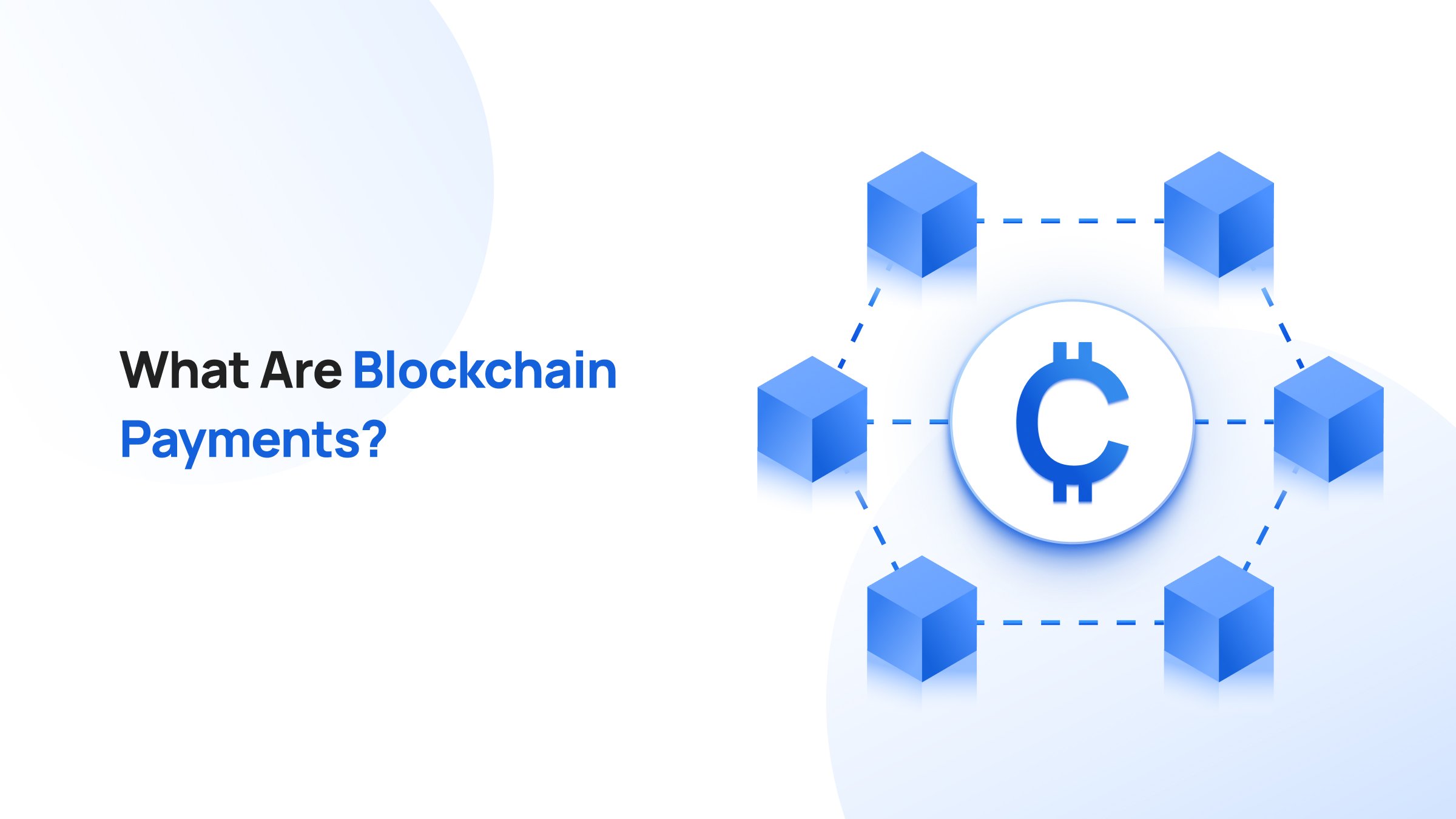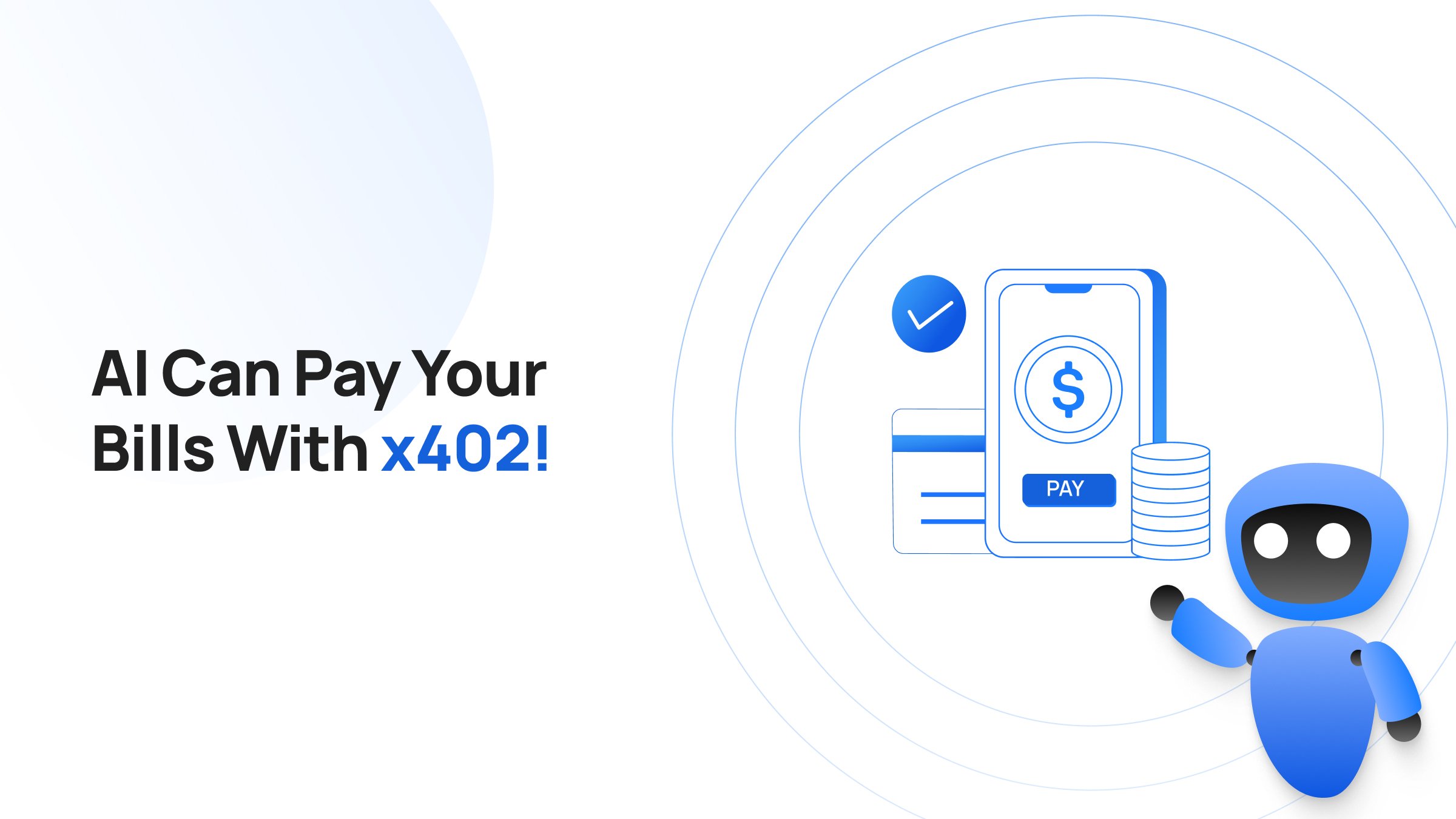If you're someone looking for crypto assets with minimal volatility, stablecoins are a good option to consider. These digital assets might help to get you a peaceful sleep without the need to worry about the crypto market price fluctuations.
The stablecoin market cap was valued at over $160 billion in May 2024, and according to broker Bernstein's research report, this market is expected to reach a valuation of $2.8 trillion by 2028. Tether (USDT), USD Coin (USDC), and Dai (DAI) account for over 90% of the total stablecoin market cap.
At present, crypto investors are concerned about various events like the crash of TerraUSD (UST), where the stablecoin failed to maintain its promised stable price. However, the stablecoin market is growing faster from 2021 following its demand among traders, investors, and stakers.
What is Stablecoin?
Stablecoin is a type of cryptocurrency that aims to maintain a stable price with the least possible price volatility. Its main target users are those who want to avoid the wild price variations of the crypto market.
The availability of underlying assets also encourages people to buy and store stablecoins. Moreover, the stable nature of these cryptocurrencies also makes them an ideal choice for staking to generate crypto rewards on even bear markets.
Exchanges also offer zero and low trading fees for stablecoin pairs, which benefits traders who place numerous trades at a time. For example, Binance doesn't charge any fees for the spot and margin trading pairs of its stablecoin FDUSD against BNB, XRP, ETH, SOL, etc.
History of Stablecoins
We'll take a look at the journey of stablecoin in the crypto space, which started around mid-2014.
- July 2014: The world's first stablecoin, BitUSD, was issued on the Bitshares blockchain and was backed by BitShares' native token, BTS.
- September 2014: The world's second stablecoin, NuBits, was issued that used an algorithmic backing mechanism pegged with Bitcoin(BTC) to manage and maintain the cryptocurrency's stability.
- October 2014: Tether (USDT) was launched by pegging with the U.S. dollar to provide the token holder with an approximate $1 value.
- December 2017: Dai (DAI) is an Ethereum stablecoin launched on Maker Protocol that attempts to maintain a $1 value by locking crypto assets as collateral.
- September 2018: USD Coin (USDC) was launched by Circle and Coinbase as a U.S. dollar-pegged stablecoin.
- May 2022: TerraUSD (UST) failed to maintain its $1 peg, and the price of this stablecoin crashed after a massive sell-off in the market.
- February 2023: Paxos ceased BUSD (Binance USD) minting following the order of the New York Department of Financial Services (NYDFS).
- June 2023: First Digital (FDUSD) was launched, backed by U.S. dollars on BNB Chain and Ethereum networks.
- August 2023: PayPal launched its U.S. dollar-pegged stablecoin PayPal USD (PYUSD), with total asset reserve and transparency.
- March 2024: Tether (USDT) becomes the first stablecoin to reach a market cap of $100 billion.
- May 2024: PYUSD becomes available on Transak
What Are the Benefits of Stablecoins?
The major benefits of stablecoins include the following:
- Stability: Stablecoins are stable forms of cryptocurrency without high price variations. This feature allows them to be used as a more convenient form of crypto asset to conduct day-to-day payments without bothering about the current market price.
- Speed: The faster transaction speed of stablecoins over fiat currencies helps to exchange funds quickly. For example, the time taken for the transaction doesn't depend on the geographical location of the sender and receiver anymore.
- Transparency: Investors or traders also have the option to choose stablecoins whose reserve funds are available online to ensure transparency. For example, top stablecoins like USD Coin (USDC) and PayPal USD (PYUSD) publish reserve holdings reports for public verification.
- Hedging: The less-volatile nature of stablecoins enables them as a hedging tool in adverse conditions. For example, traders or investors can convert their crypto assets as stablecoins during a negative market condition to avoid the value depreciation of their assets.
- Budget-friendly: Traditional payment methods charge higher fees, especially when the payment takes place between two countries. In the case of stablecoin, the transaction fee charged is less even compared to that of other cryptocurrencies.
- Interoperability: Top stablecoins are supported by all major dApps and DeFi platforms alike. For this reason, stablecoin holders can participate in various services like trading, swapping, investing, lending, or borrowing without exchanging them with other supported tokens.
- Low-risk Staking: When it comes to staking, stablecoins are the best option to ensure overall positive returns irrespective of market conditions. If you stake an altcoin for a 15% annual percentage rate (APR) but its price dropped 20% during that period, in that case, you'll be left with a 5% loss.
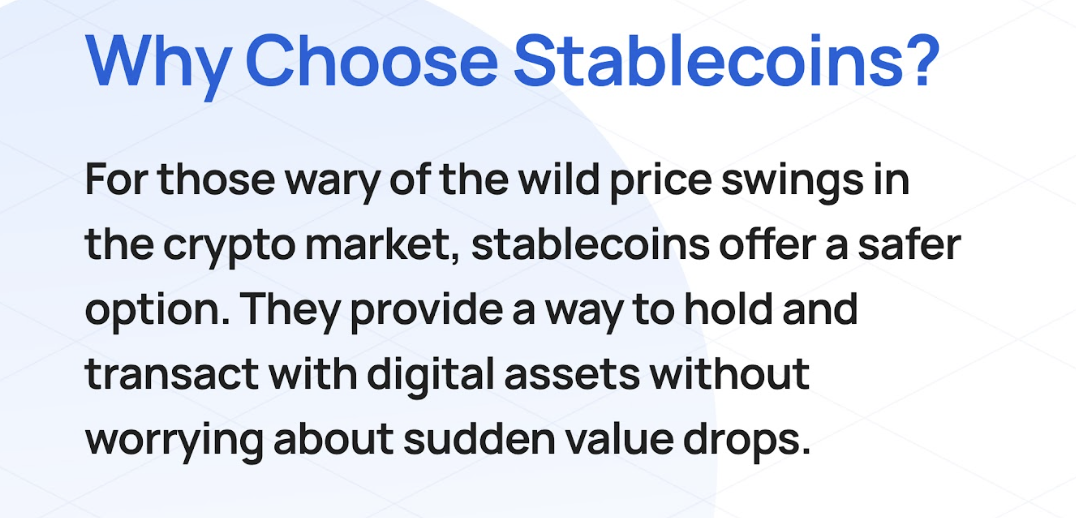 Risks Associated with Stablecoins
Risks Associated with Stablecoins
Stablecoins have numerous advantages but also come with certain major risks, such as:
Depeg Risks
Depegging risks exist for all types of stablecoins that fail to maintain the value that they promised to maintain. For example, when TerraUSD (UST) failed to maintain its peg, there was a huge sell-off, crashing its price to almost zero.
Depeg events can take place for reasons such as:
- High market volatility
- Mismanagement of collateral or reserves
- Design or technological flaws
- Regulatory actions or uncertainties
- Negative market sentiments
- Demand and supply imbalance
Smart Contract Risks
While the smart contract allows the fully automatic functioning of stablecoins, it also comes with operational risks. Any glitch in the deployed smart contract can lead to loss of funds or failure of the stablecoin projects in no time.
For example, the stablecoin protocol Seneca, which facilitates users' borrowing of its stablecoin, senUSD, against supported collateral, lost over $6 million in smart contract exploits. To exploit the fund, the attacker leveraged the vulnerability in the protocol's smart contract approval mechanisms.
Types of Stablecoins
Stablecoins can be broadly divided into four types:
- Fiat-backed Stablecoins: These types of stablecoins are backed by fiat currency reserve that mostly aims to keep its collateral in 1:1 pegged.
- Crypto-backed Stablecoins: Here, top cryptocurrencies like Bitcoin (ETH) or Ethereum (ETH) back the stablecoins in higher ratios to maintain their value during highly volatile market conditions.
- Commodity-backed Stablecoins: These stablecoins are pegged with real-world assets such as crude oil, real estate, or gold to maintain a stable price.
- Algorithmic Stablecoins: In the case of these stablecoins, smart contracts and algorithms are used instead of valuable assets to stabilize the price by controlling the circulating supply of tokens.
Top Stablecoins
We'll explore the top stablecoins.
Tether (USDT)
USDT is a 1:1 U.S. dollar-pegged stablecoin that has existed in the crypto space since its launch in 2014. Despite being the stablecoin leader based on market cap, USDT has faced numerous controversies and criticism in the past regarding its transparency and collateral backup.
Tether has also launched its USDT stablecoins on the TON blockchain that facilitates Telegram users to conduct seamless P2P crypto transactions. At present, USDT token's reserves, including total assets and liabilities, are available on its website, which is updated daily.
USD Coin (USDC)
USDC is an ERC-20 token backed by the U.S. dollar designed to provide a value close to $1. It was launched jointly by Coinbase and Circle in 2018.
The USDC's transparency policy helped it become the second most valuable stablecoin based on its market cap. The balance details regarding the USDC in circulation and reserves are updated regularly on Circle's website.
Dai (DAI)
DAI is a stablecoin issued by the MakerDAO on the Ethereum blockchain in 2017. Unlike other major stablecoins, DAI is overcollateralized with cryptocurrency assets to maintain its price stability at $1.
This stablecoin also uses complex algorithms to maintain to avoid possible depegging risks. Here, the DAI working system incentivizes user participation to prevent this stablecoin from going below or above the price of $1.
PayPal USD (PYUSD)
PayPal entered the stablecoin ecosystem with the launch of PayPal USD (PYUSD) in August 2023. These fiat-pegged PYUSD tokens were developed to provide a value close to one U.S. dollar for its holders.
A regulated blockchain infrastructure firm, Paxos issues PYUSD tokens on Ethereum and Solana blockchains. Paxos also ensures 100% reserve assets for PYUSD stablecoins by depositing adequate assets in U.S. treasuries, dollar deposits, and cash equivalents.
Conclusion
Stablecoins represent a significant innovation in the cryptocurrency landscape, offering a stable and secure way to engage with digital assets.
Despite the risk possibilities and unfortunate events, stablecoins are still one of the important innovations in the crypto space. With its introduction, investors and traders have a stable asset that safeguards their crypto portfolio during negative market conditions.
The transparency policies and availability of sufficient asset reserves will help the growth of stablecoins in the near future.

